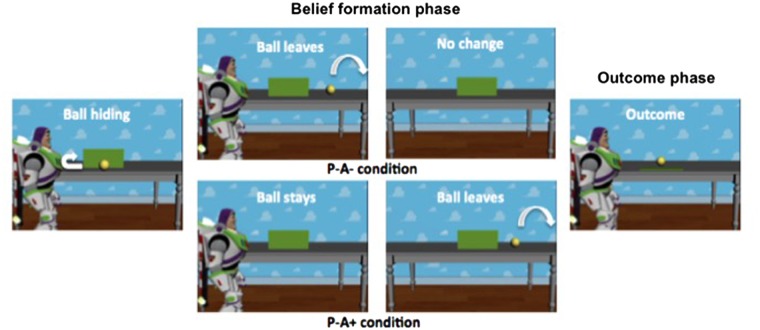Fig. 1.
Frames of two of the movies presented during the tasks. Example of a false belief condition (P–A−) and a true belief condition (P–A+). There were eight conditions in total, resulting from the combination of belief formation phase and outcome phase. In the first part of the movie, the ball rolls behind the screen. In the second part (belief formation phase), in the presence of the agent, the ball can change location or stay behind the occluder. Afterwards the agent leaves the scene and the ball can change its location or not. In the outcome phase, the agent comes back to the scene and the occluder is lowered. The ball is present or not (50% of the cases). Please note that, in the ‘no change’ video fragment, the ball was moving anyway. For example, it would roll out from the occluder and then roll back behind the occluder. In all movies, the ball was visible to the participant for the same amount of time.

